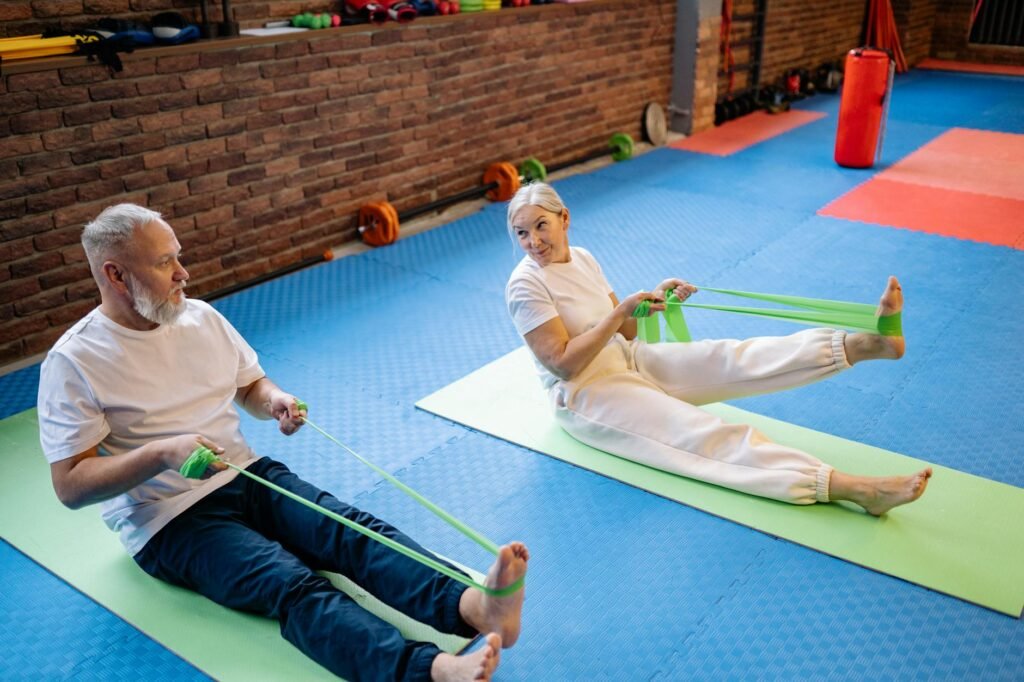As we age, maintaining our physical health becomes increasingly important. Strength training, often associated with younger athletes, can offer significant benefits for seniors as well. Engaging in regular strength exercises can enhance mobility, improve balance, and boost overall well-being. This article will explore the advantages of strength training for older adults and provide practical tips to help seniors incorporate it into their daily routines safely and effectively. Whether you’re a beginner or looking to enhance an existing fitness regimen, understanding how strength training can improve your life is crucial as you age.
Table of Contents
- Understanding the Benefits of Strength Training for Seniors
- Choosing the Right Exercises for Enhanced Mobility
- Tips for Safe and Effective Strength Training Sessions
- Incorporating Strength Training into a Weekly Routine
- Closing Remarks
Understanding the Benefits of Strength Training for Seniors
Strength training plays a crucial role in enhancing the overall well-being of seniors. Engaging in regular strength training can lead to improved muscle mass, which naturally declines with age. Increased muscle strength aids in daily activities, allowing seniors to perform tasks with greater ease and reduced risk of injury. Furthermore, strength training contributes to better bone density, lowering the risk of fractures and osteoporosis, which is paramount for maintaining a healthy and active lifestyle.
Participating in strength training also supports mental health by fostering a sense of accomplishment and boosting self-esteem. Social interaction can be another significant benefit when seniors join group exercise classes, promoting connection and camaraderie. Here are some other advantages of strength training for seniors:
- Enhanced balance and coordination
- Improved joint flexibility
- Better mobility and endurance
- Support for chronic disease management
Choosing the Right Exercises for Enhanced Mobility
Enhancing mobility is crucial for seniors to maintain independence and prevent injuries. When selecting exercises, it’s essential to focus on movements that promote flexibility, balance, and strength. Consider incorporating activities such as:
- Stretching: Gentle stretches help improve flexibility and can be performed daily.
- Walking: A simple, effective way to enhance cardiovascular health and leg strength.
- Yoga or Tai Chi: These practices focus on balance and coordination, reducing the risk of falls.
- Resistance training: Light weights or resistance bands can build strength without stressing the joints.
It’s also beneficial to establish a routine that includes functional movements mimicking daily activities. This not only adds variety but ensures exercises serve a practical purpose. A sample weekly routine might include:
| Day | Exercise | Duration |
|---|---|---|
| Monday | Walking | 30 minutes |
| Wednesday | Chair Yoga | 20 minutes |
| Friday | Resistance Band Training | 25 minutes |
Consistency is key; listening to one’s body and making adjustments as necessary will enhance effectiveness and enjoyment of the exercises.
Tips for Safe and Effective Strength Training Sessions
Prioritizing safety is essential when engaging in strength training sessions, especially for seniors. Always start with a warm-up to prepare your muscles and joints, reducing the risk of injury. Focus on maintaining proper form during exercises, as this not only increases effectiveness but also minimizes strain. Consider using lighter weights or resistance bands to build strength progressively. Remember to listen to your body; if something feels uncomfortable or painful, it’s important to stop and reassess. Some additional tips include:
- Hydration: Ensure you drink enough water before, during, and after your workout.
- Cool Down: Spend time cooling down with gentle stretches to improve flexibility.
- Consult with Professionals: If possible, work with a certified trainer to create a personalized routine that meets your fitness level.
Incorporating strength training into your routine can yield fantastic results, but it’s vital to do it effectively. Aim for balanced workouts that cover major muscle groups, ideally two to three times a week. Keep your sessions short and focused, around 30 to 45 minutes, to avoid fatigue. A simple structured plan might include:
| Muscle Group | Suggested Exercises |
|---|---|
| Upper Body | Dumbbell Press, Lateral Raises |
| Lower Body | Squats, Leg Curls |
| Core | Planks, Seated Torso Twists |
Incorporating variety not only keeps workouts interesting but also challenges different muscle groups for balanced strength development. Tracking your progress can provide motivation and help adjust your routine as needed. Always ensure that your environment is safe, with ample space to move and equipment set up for easy access.
Incorporating Strength Training into a Weekly Routine
Incorporating strength training into your weekly routine can be both manageable and enjoyable. Aim to include strength training exercises at least two times a week, targeting all major muscle groups. To maximize the effectiveness of your workouts, consider the following tips:
- Start Slow: If you’re new to strength training, begin with lighter weights and gradually increase as your strength improves.
- Focus on Form: Proper technique is crucial to prevent injury. If possible, consult a trainer for guidance.
- Use Bodyweight Exercises: These can be effective and safe initial options, such as squats, push-ups, and lunges.
- Incorporate Variety: Mix in different types of exercises to keep the routine engaging and target various muscles.
To help structure your routine, consider using a simple weekly schedule. Here’s a sample template:
| Day | Activity |
|---|---|
| Monday | Upper Body Strength Training |
| Tuesday | Cardio (e.g., walking, cycling) |
| Wednesday | Lower Body Strength Training |
| Thursday | Rest or Light Stretching |
| Friday | Full Body Strength Training |
| Saturday | Active Leisure (e.g., gardening, swimming) |
| Sunday | Rest or Gentle Yoga |
Closing Remarks
strength training offers numerous benefits for seniors, from improving muscle mass and bone density to enhancing balance and overall health. It’s never too late to start, and even small steps can lead to significant improvements in your quality of life. Remember to consult with a healthcare provider before beginning any new exercise program and to choose activities that suit your personal comfort and ability levels. By incorporating strength training into your routine, you can enjoy a more active, independent lifestyle. Stay strong and active, and embrace the positive changes that come with it.




